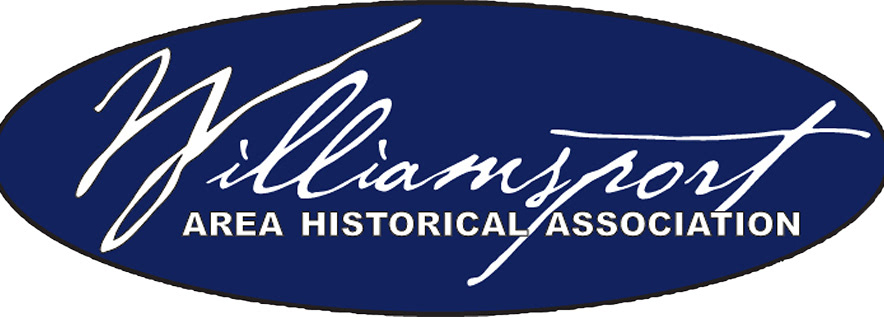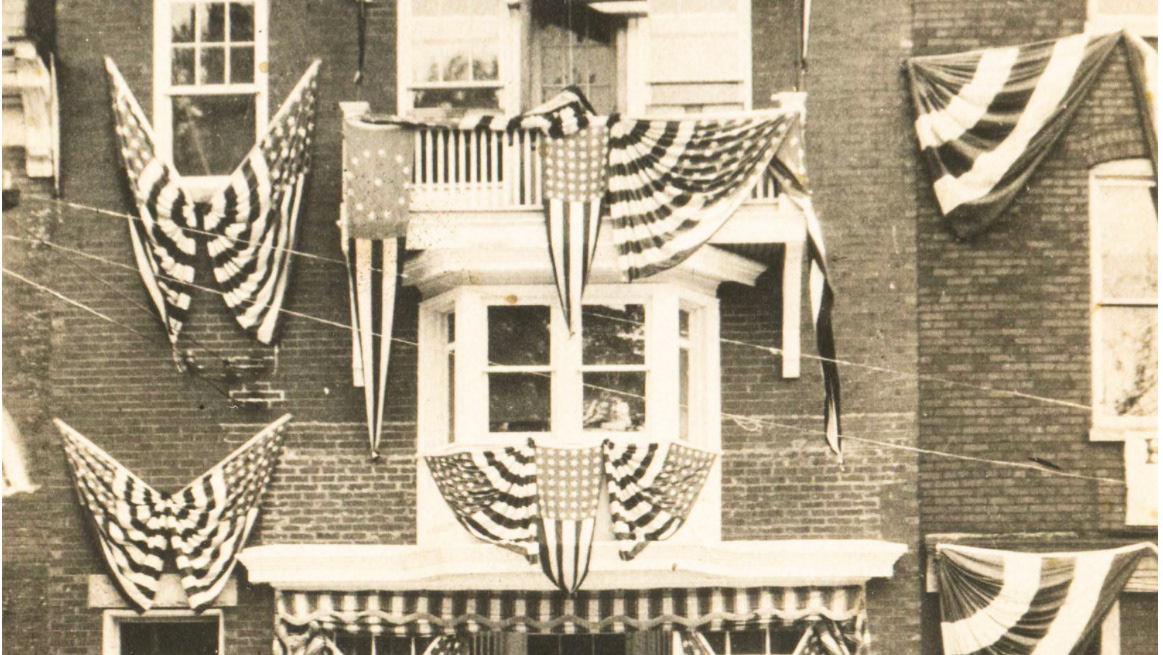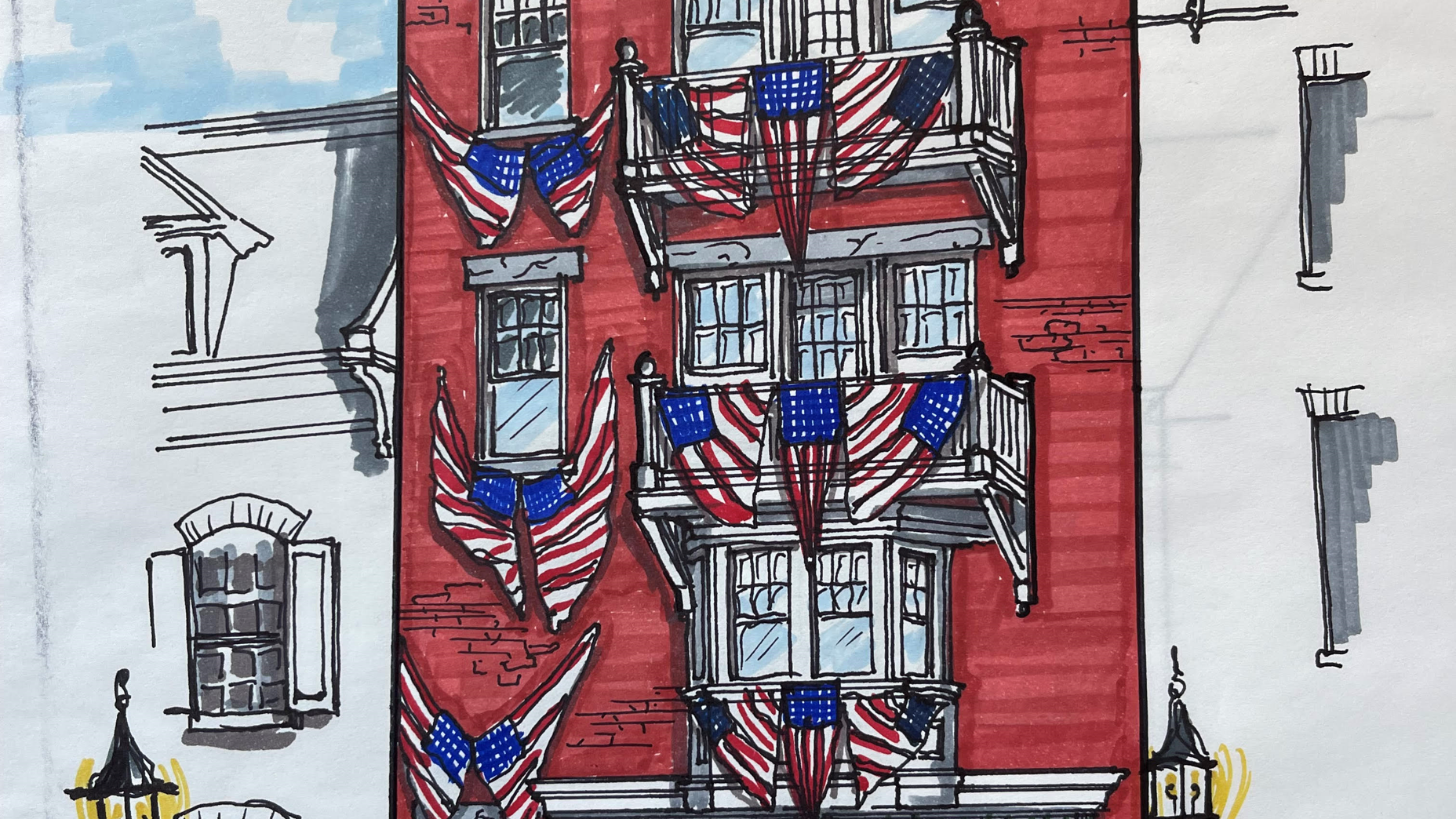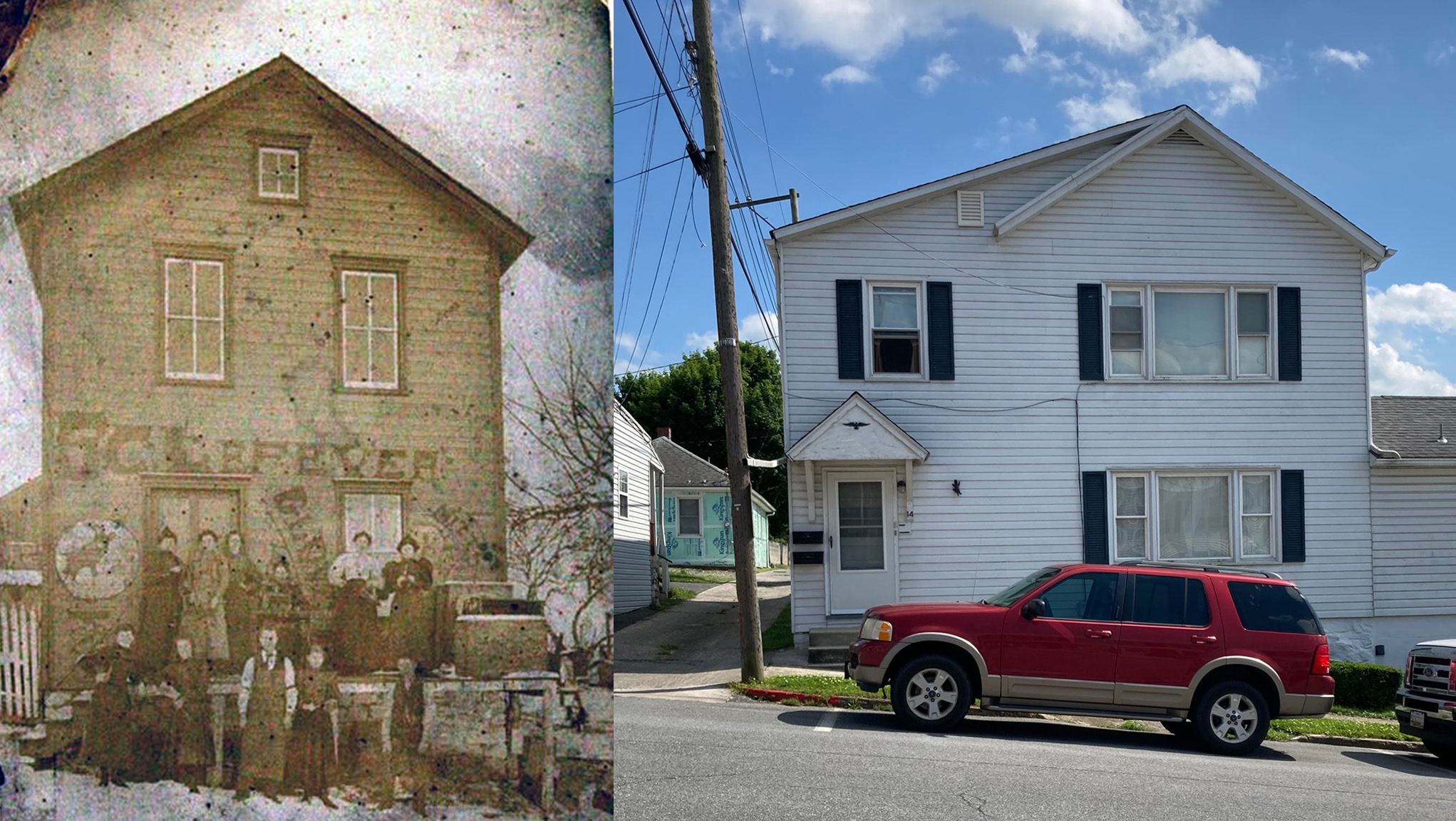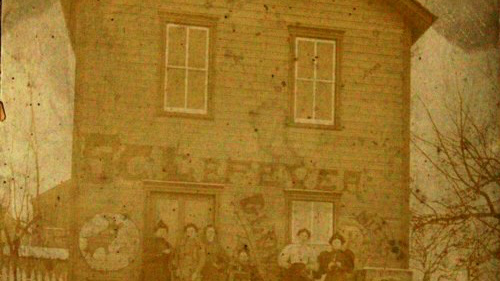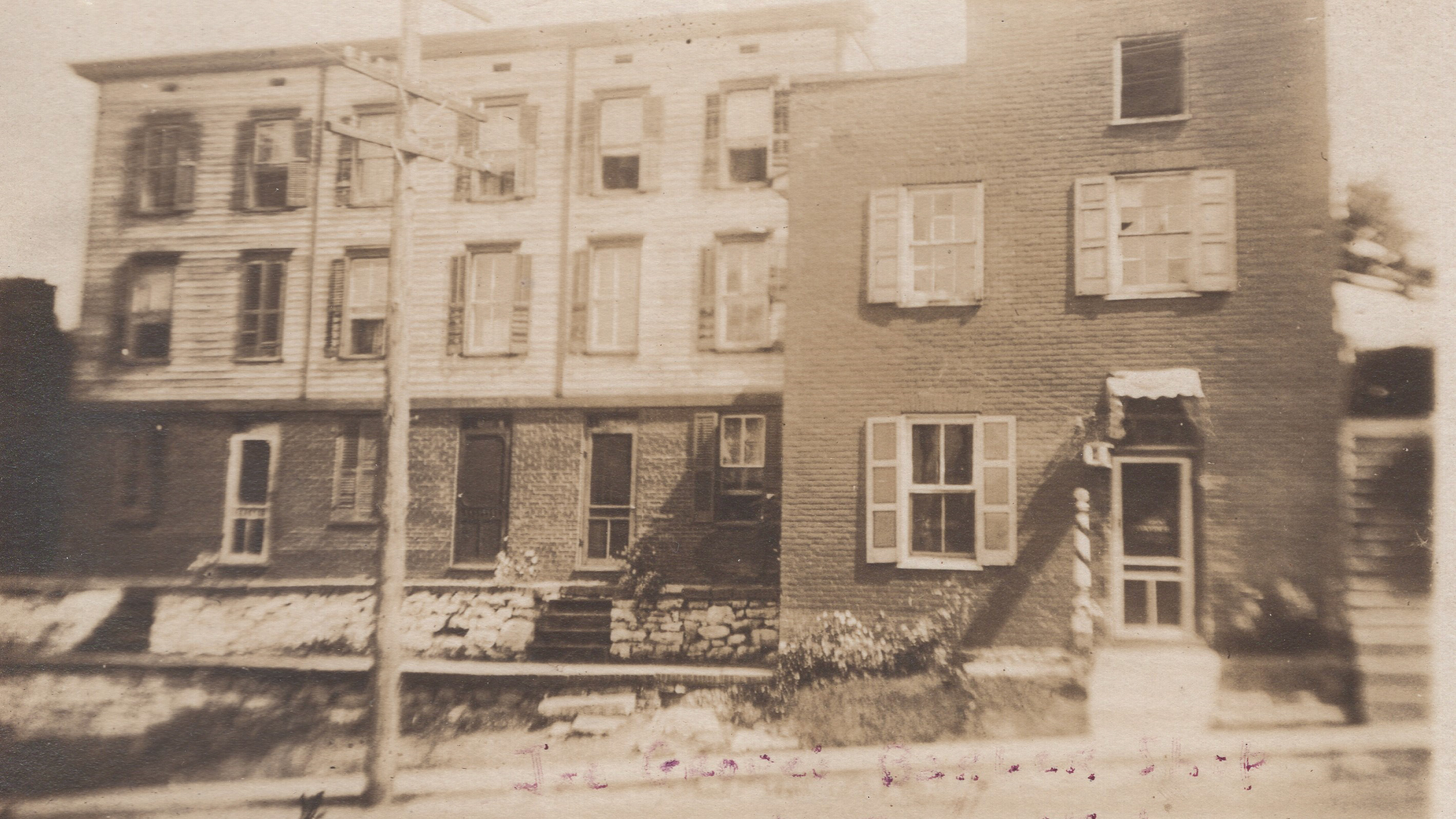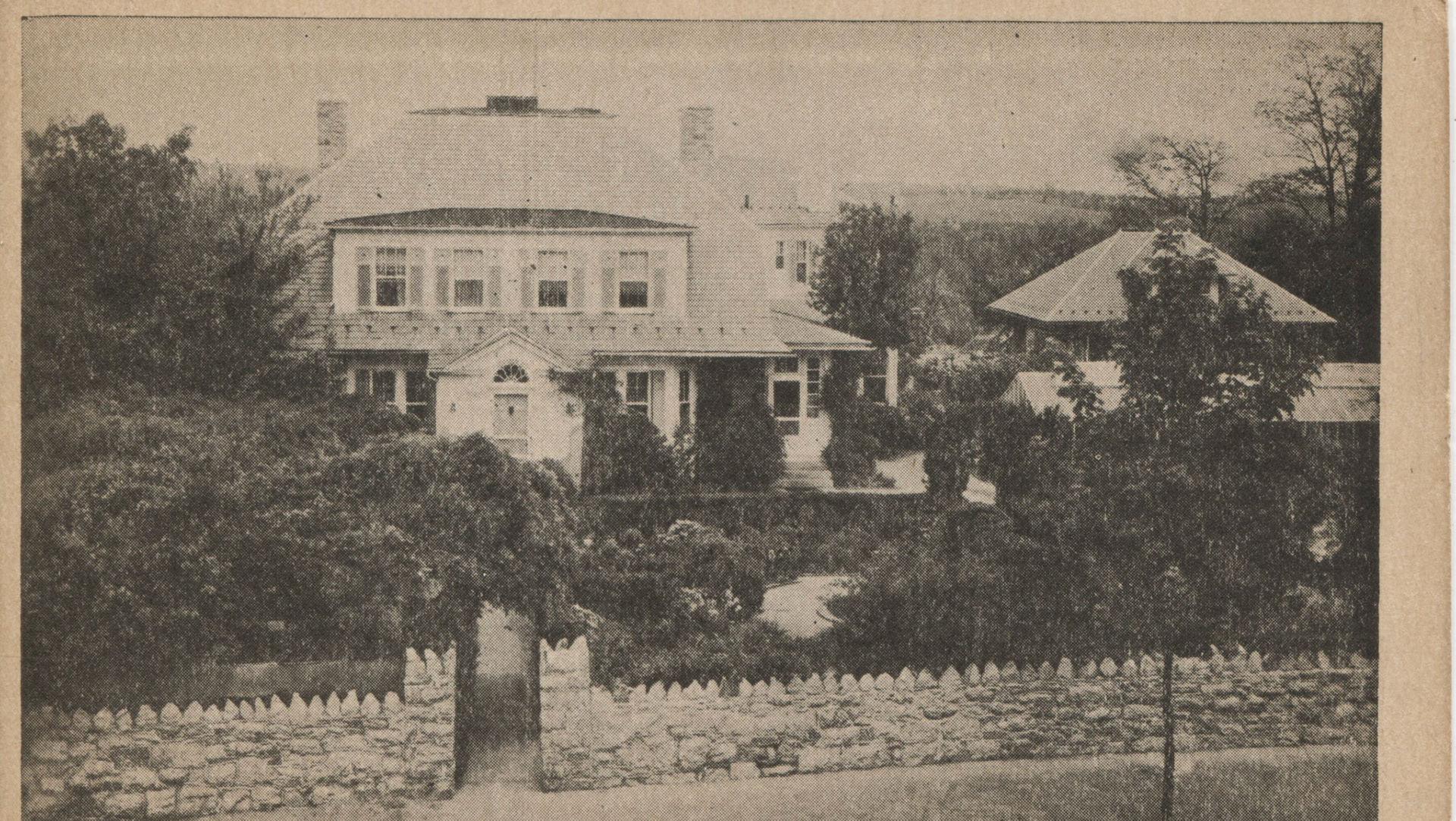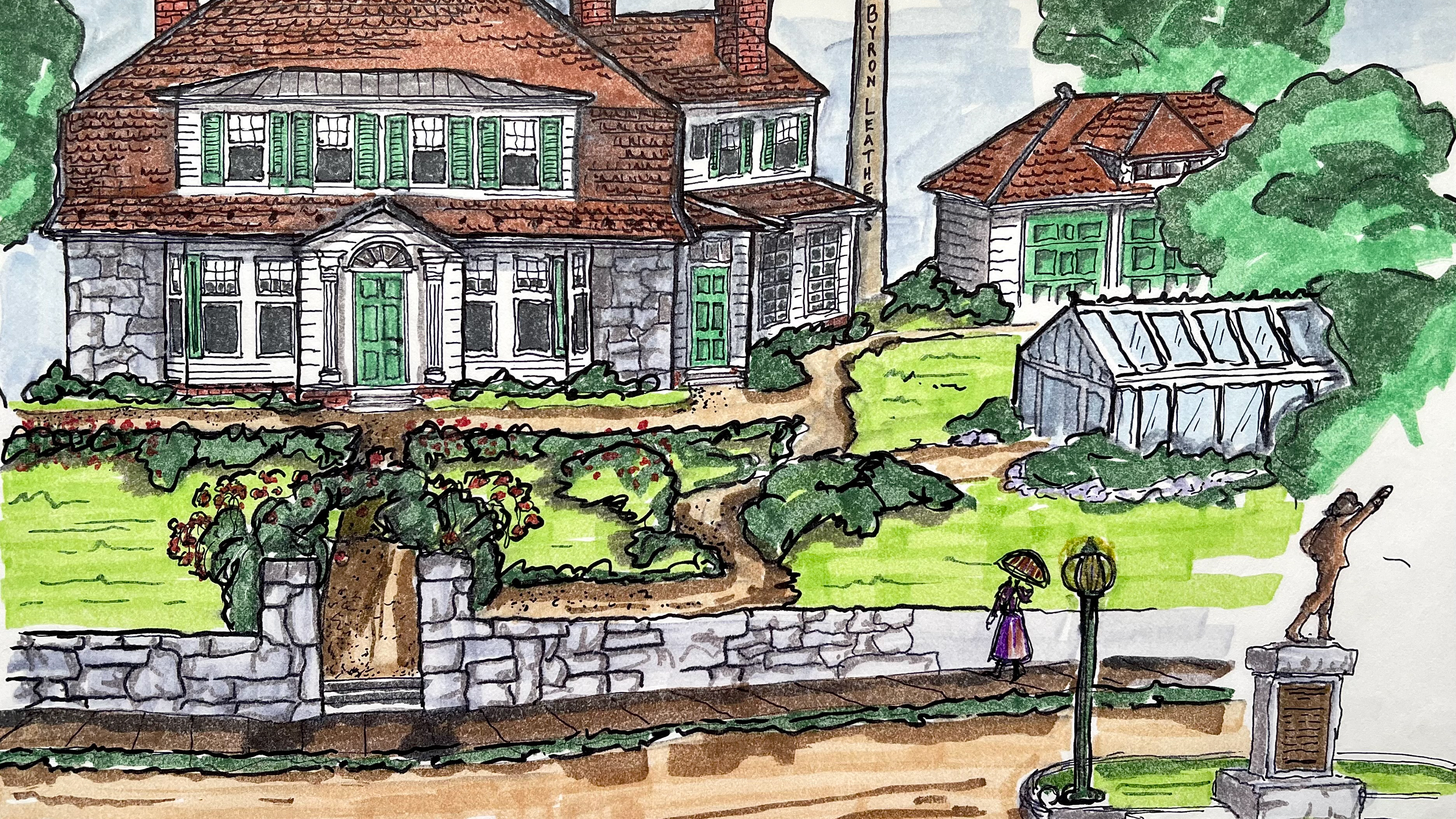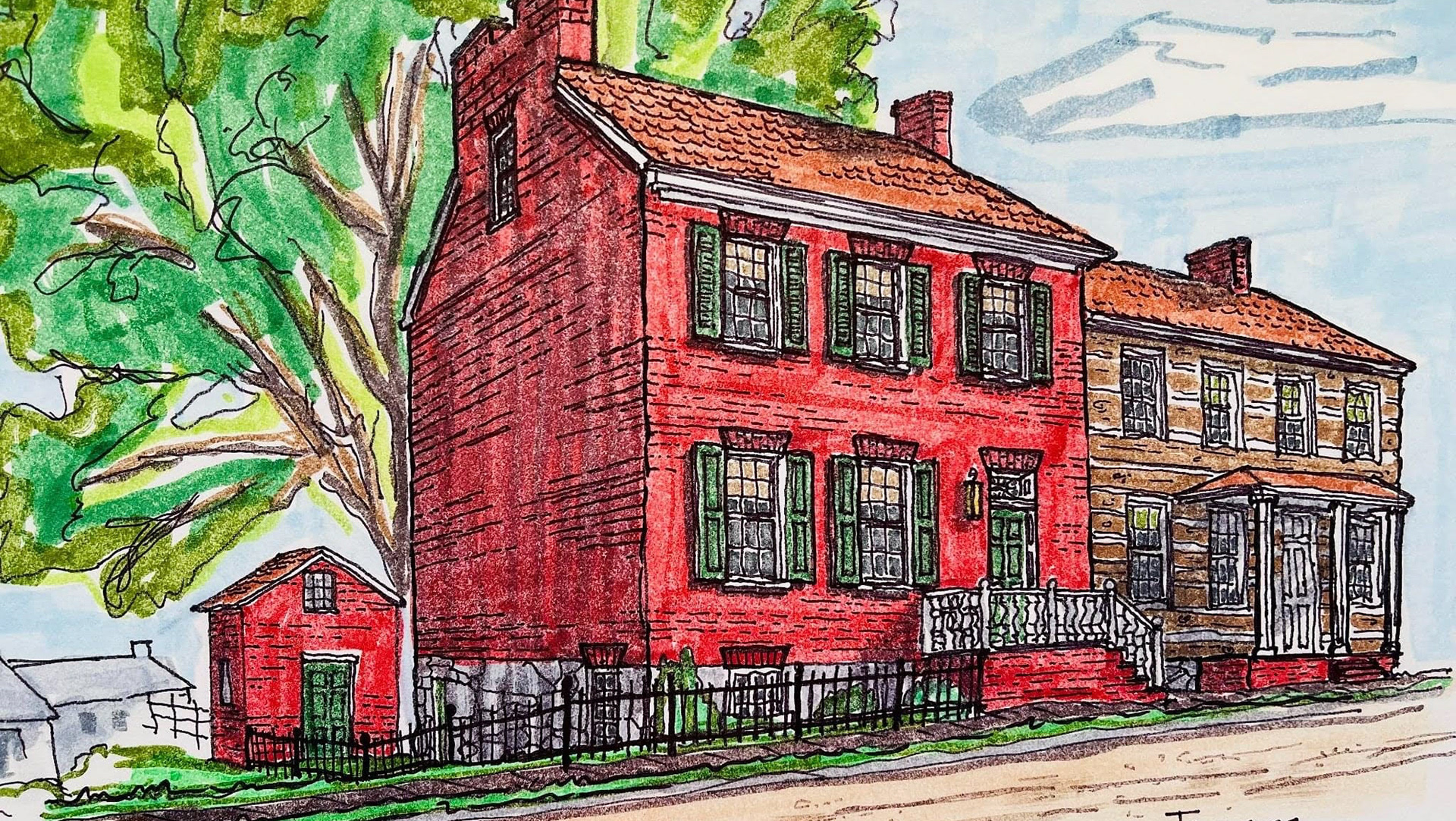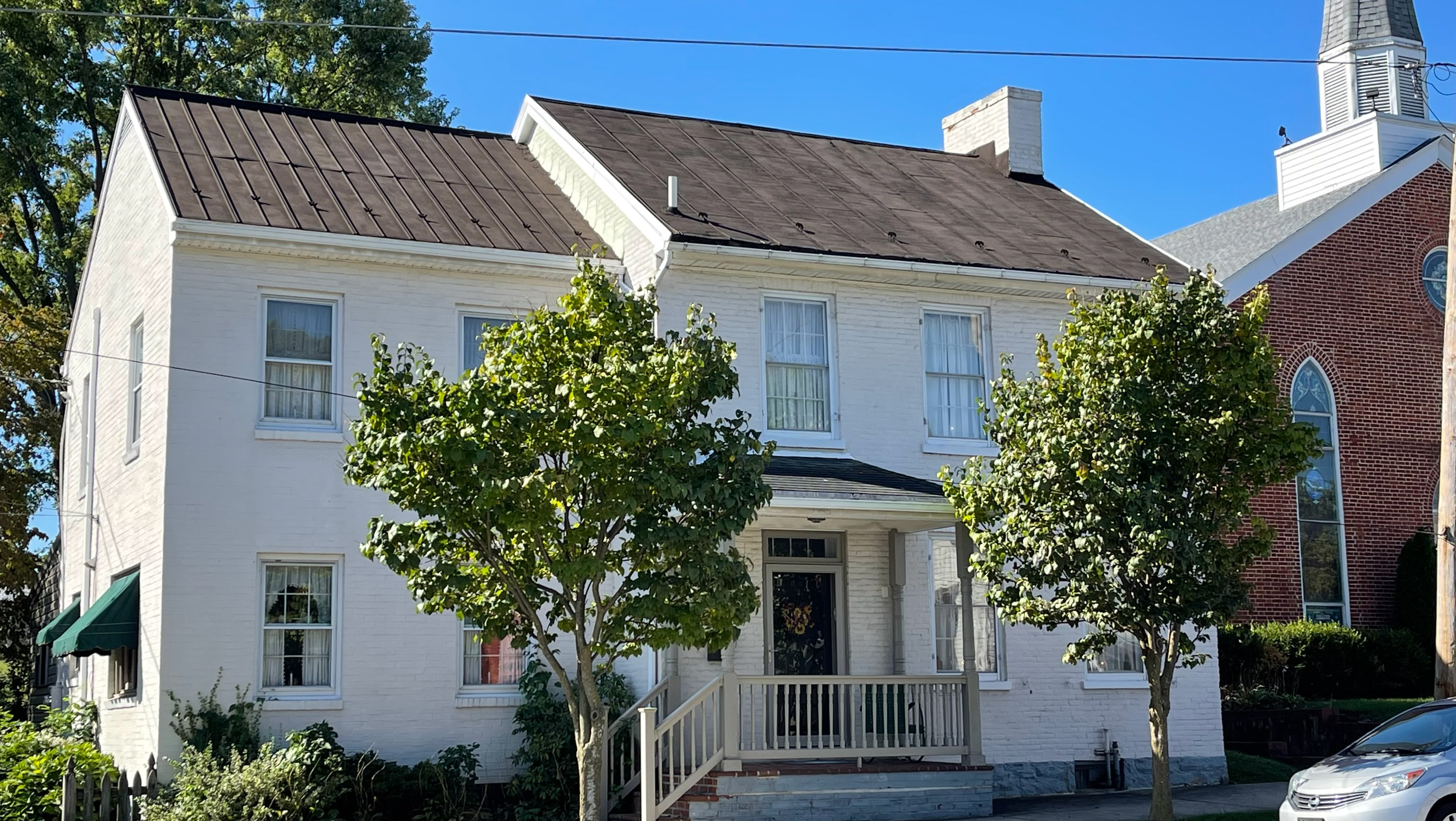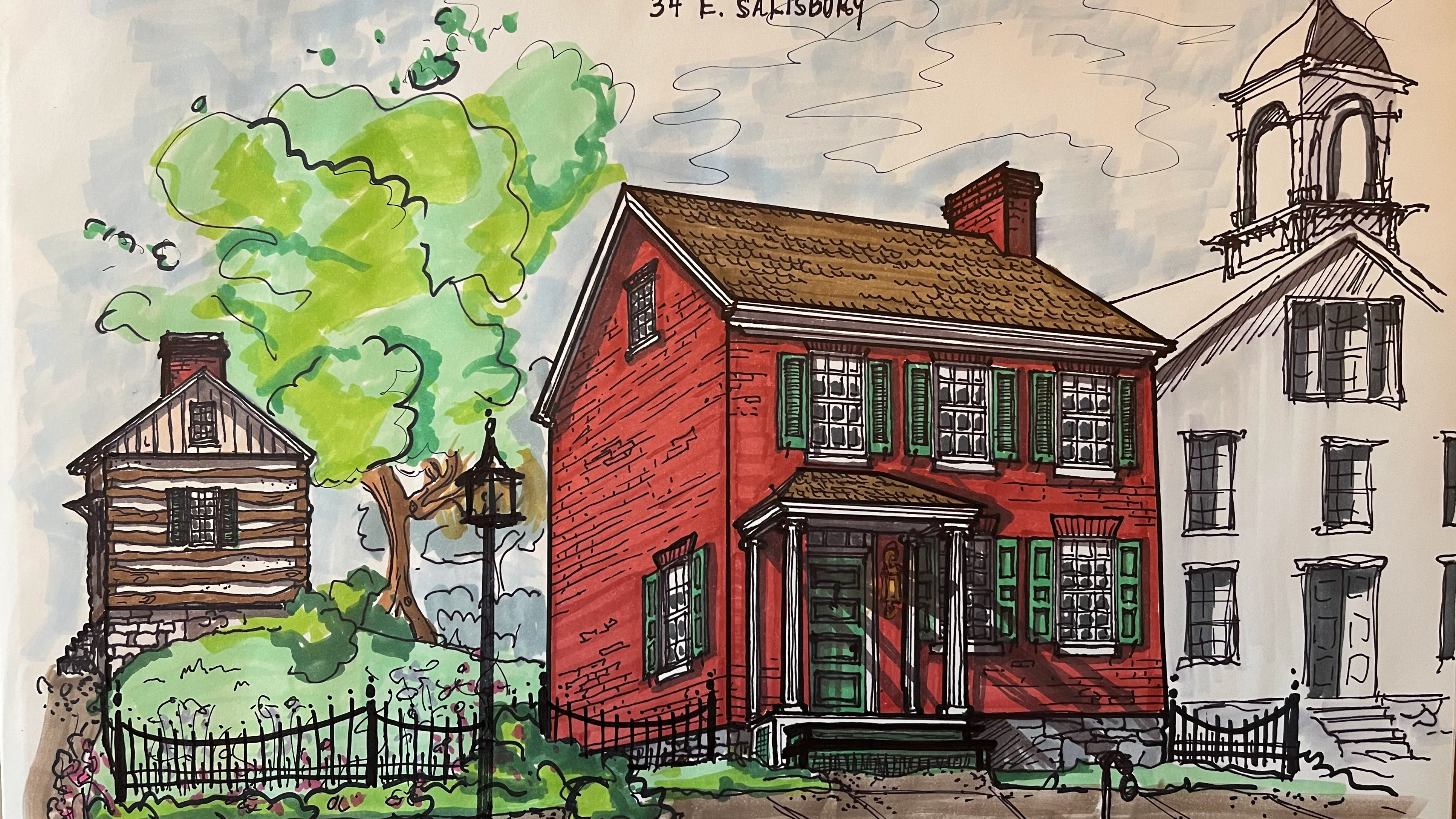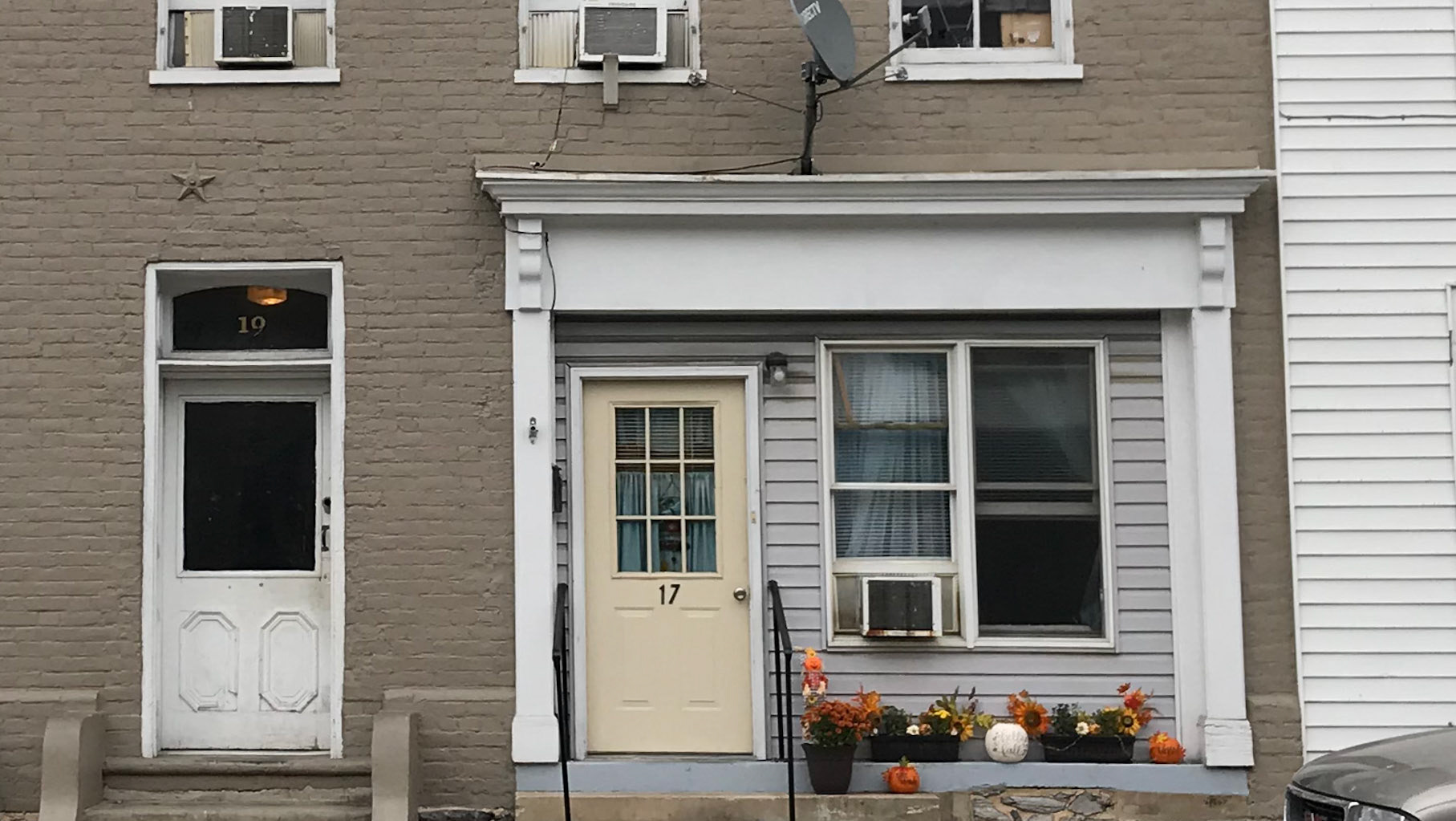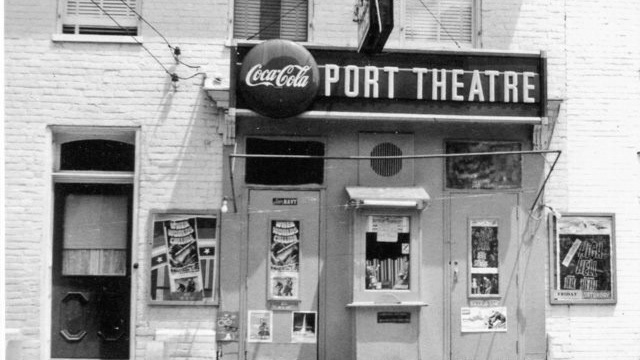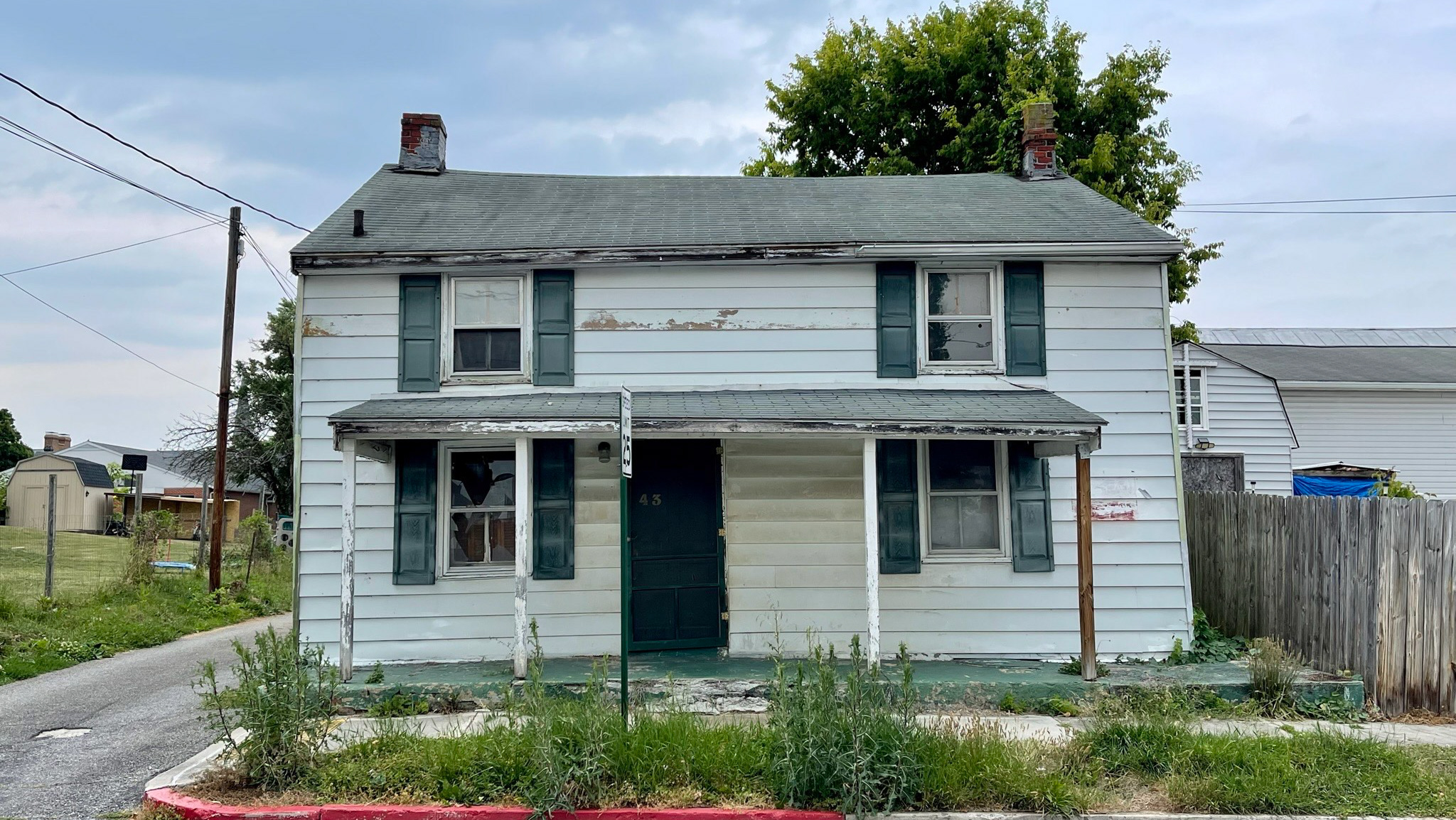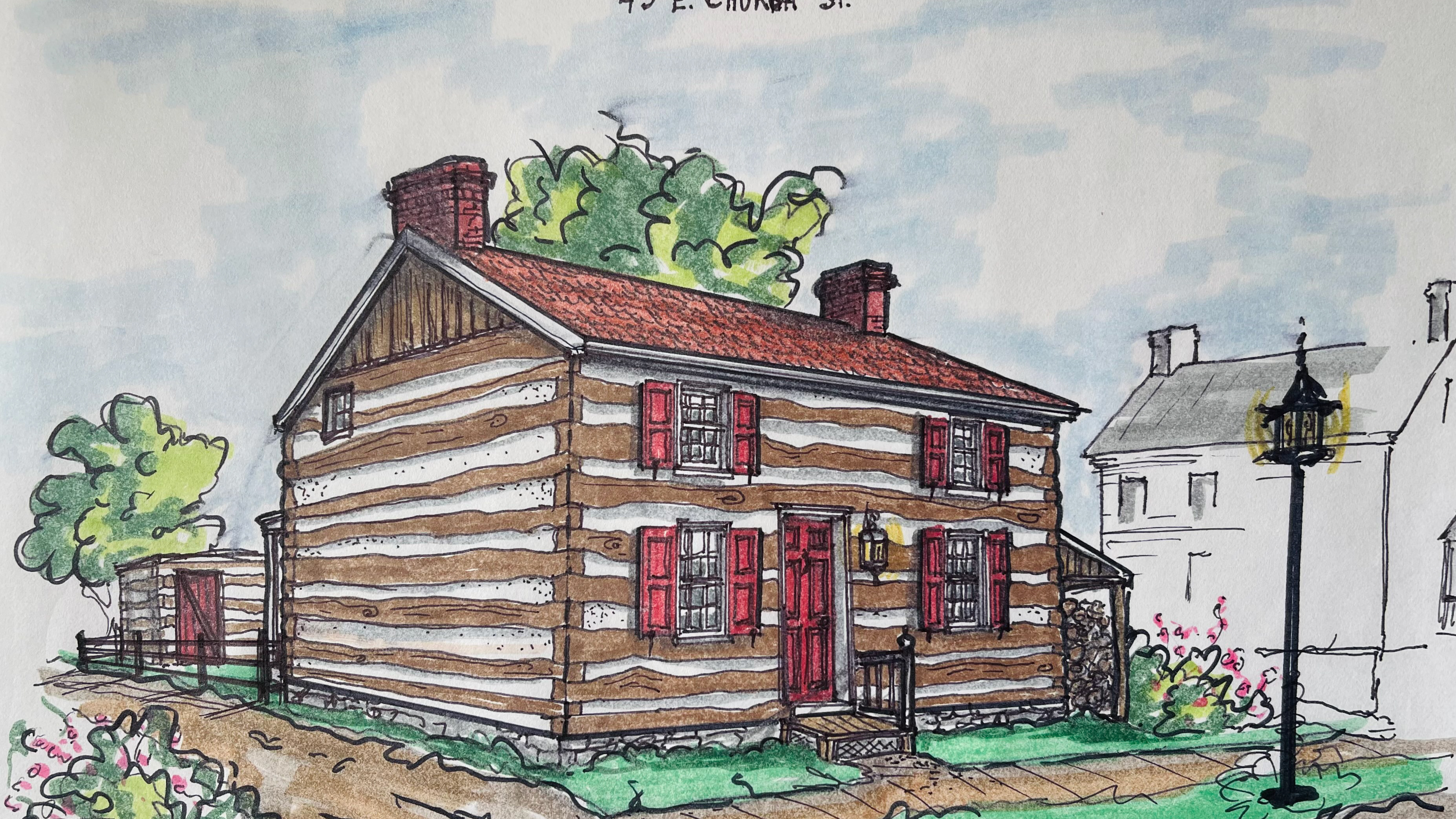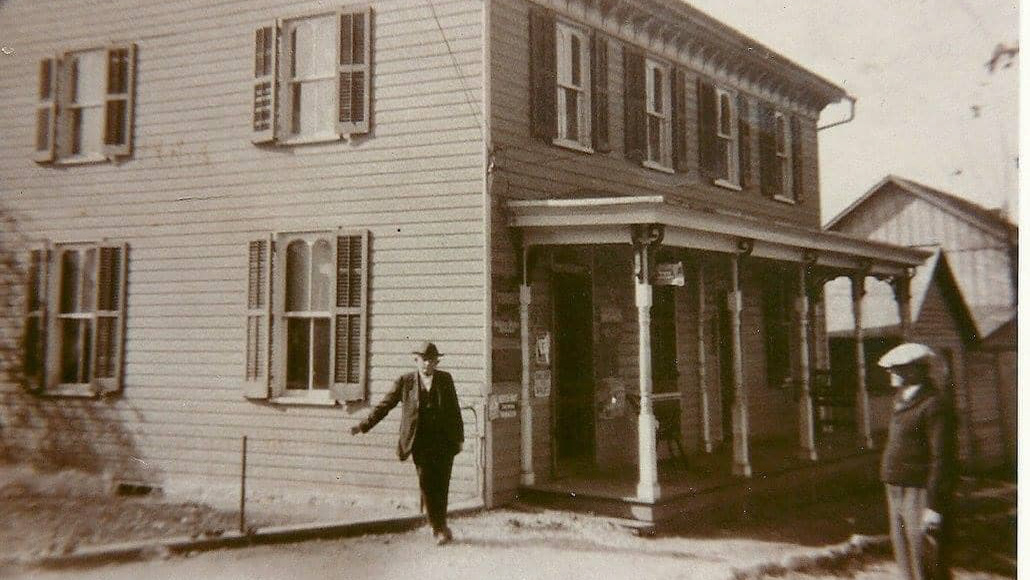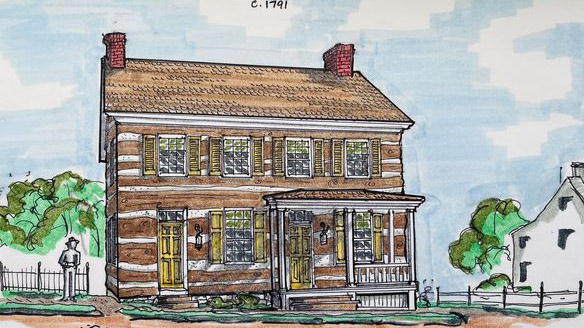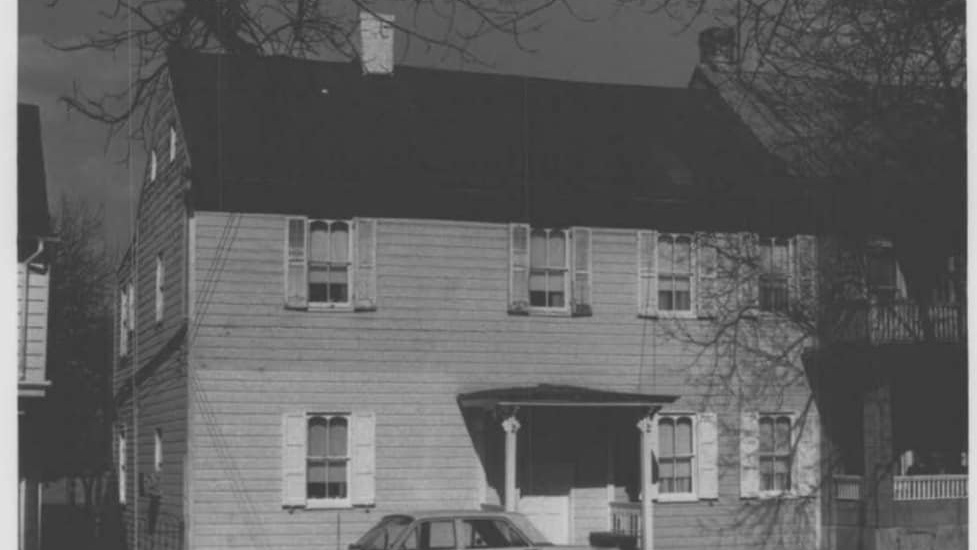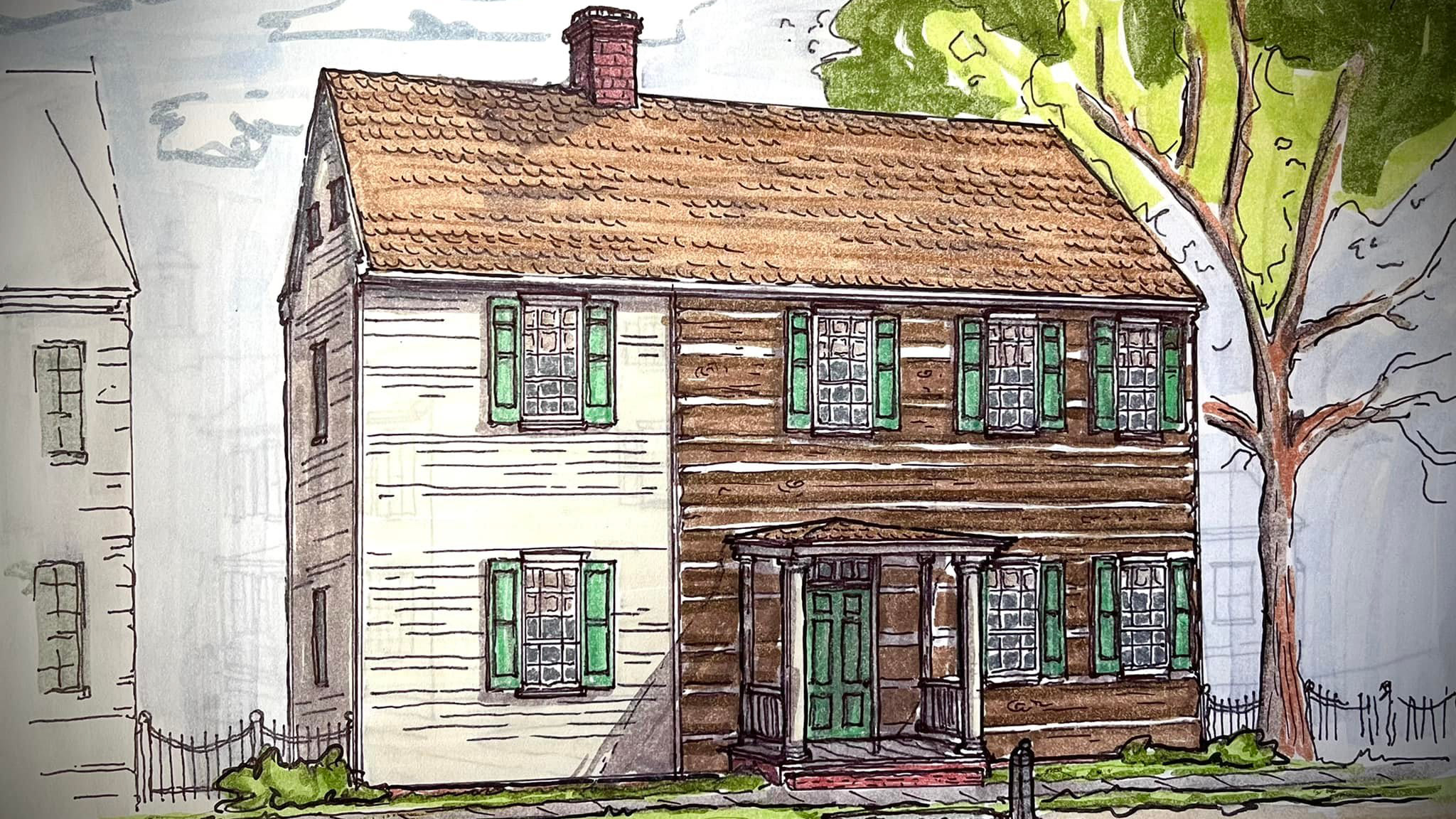Did you know that many of the earliest buildings in Williamsport are log? All of the surviving early log houses in town are hiding in plain sight, covered up with a variety of more contemporary siding. Wouldn’t it look great on our historic streets if a few were exposed?
John Hogg and his new wife Mary Rebecca Wallace, moved to Williamsport from Mercersburg, Pa in the late 1780s, just as General Williams started leasing lots in his new town. Born in 1740, John Hogg was a Scottish immigrant seeking opportunity. He leased 2 lots in 1788 next to each other on West Potomac Street across from what is now the M&T Bank. Hogg and his wife were some of the very earliest settlers in Williamsport, having leased the lots less than a year after the town was planned. They built not one but two log homes on these lots. The house at 17 West Potomac was the larger of the two and their residence. The house at 15 West Potomac which still remains is smaller and was presumably used as a tenant house or for a family member. 17 West Potomac, built between 1788 and 1790 was a large and stylish home for early Williamsport. According to surviving photographs of the interior before it was demolished for a parking lot in 1999, the house had styling in the Georgian taste. Georgian architecture is fairly rare for Washington County making this building important. The rafters in the attic were felled trees stripped of their bark, held in place with wooden pegs.
Early newspaper articles and historical accounts show Hogg was a merchant who owned half interest in a mill north of Williamsport on the Conococheague Creek. I believe the mill may have been what is known today as Kemps Mill. His company, the Union Manufacturing Company of Maryland milled flour. In 1802 it was noted that he was sending flour for 2 dollars a barrel to Georgetown along with Thomas Kennedy (last weeks post).
This house witnessed Williamsport’s growth from the beginning. The home saw every major event of the 19th century, including the Civil War and was undoubtedly used to house wounded soldiers after Gettysburg. It saw every major event of the 20th century as well, world wars, the Great Depression, man’s first trip to the moon, and so on. the old adage goes “if these walls could talk”.
Efforts to save it were made in earnest, a proposal to section off the parcel with the house was made to the town so it could be sold and preserved. That proposal was sadly rejected in late 1999. This signaled the death knell for the historic home and left the owners with no choice. Ultimately the 210 year old home fell to the wrecking ball just before the turn of a new century and millennium. A sad end to one of Williamsports earliest buildings and the home of one of its pioneering founding members.
These buildings are extremely important to our towns early heritage. They offer a rare glimpse into the very first years of our towns history and should be protected. Williamsport’s heritage is important.
Today
